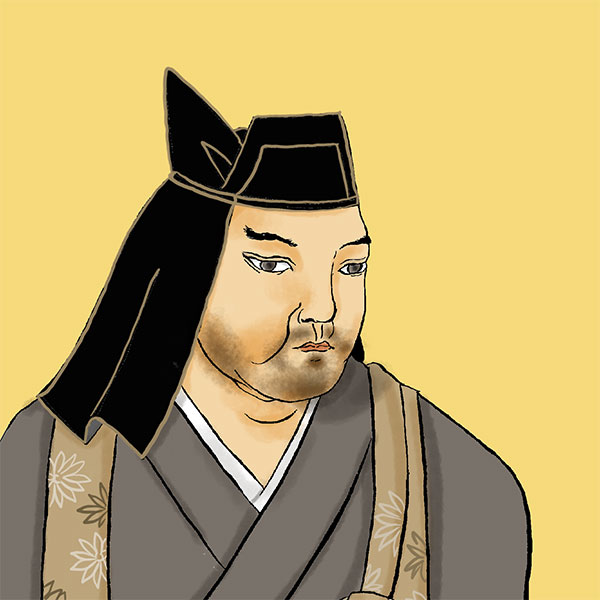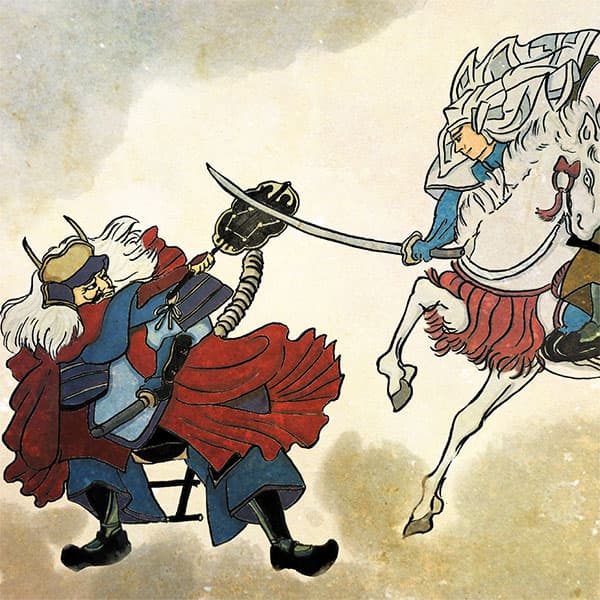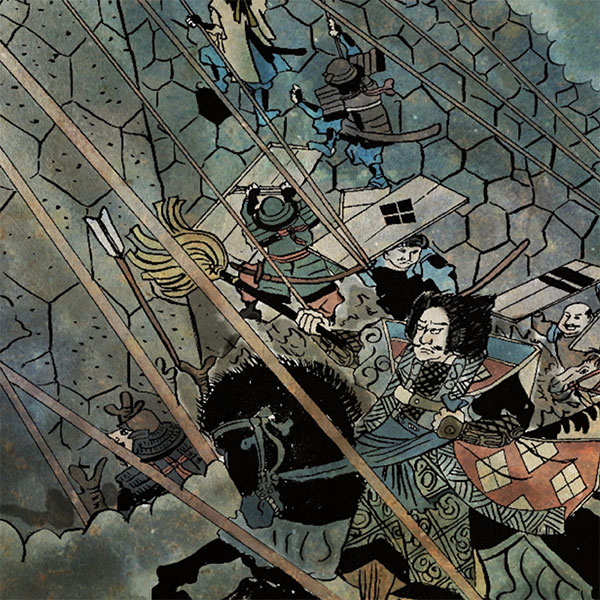Kenshin Uesugi (1/2)A warrior known as the god of war

Kenshin Uesugi
- Article category
- biography
- name
- Uesugi Kenshin (1530-1578)
- place of birth
- Niigata Prefecture
- Related castles, temples and shrines

Yonezawa Castle

Takada Castle
- related incident
During the Sengoku period, one of the essential qualities for many military commanders was military talent. There are ways to use military commanders and talented vassals, but the best option is for the military commander himself to be skilled in warfare. There are many military commanders who are said to be good at fighting, but among them, Uesugi Kenshin may be said to be one of the top. He ruled Echigo and left his name in the battle with Takeda Shingen. We will introduce the life of the man who was also called the god of war or the dragon of Echigo.
First time since birth
He was born in Kasugayama Castle in 1530 as the fourth son (some say second or third son) of Echigo Shugo, Tamekage Nagao (of the Sanjo Nagao family), and his mother Tora Gozen. Her childhood name was Torachiyo. It is said that the name was given to people born in the year of the Tiger.
At that time, Echigo Province was in the midst of a violent civil war, and his father, Tamekage, fought many battles during the period of imperial rule. His father forced Fusano Uesugi, the governor of Echigo, to commit suicide, and then killed Kensada Uesugi, the Kanto Kanrei, at the Battle of Nagamorihara. He also wielded power with Sadazane Uesugi as his puppet, but was unable to pacify Echigo Province.
In October of the same year, Sadanori Uesugi, the lord of Kamijo Castle, rallied the forces of the former Uesugi family and rebelled against his father, Tamekage. This war resulted in a situation where not only the Yohokushu who were based north of the Agano River but also the head of the Ueda Nagao family, Fusunaga Nagao, who belonged to the Nagao clan of the same clan, responded.
Although his father, Tamekage, won the Battle of Sanbunichihara, the conflict with the Ueda Nagao family continued, leading to the rebellion of Nagao Masakage, the next head of the Ueda Nagao family, and the Otate Rebellion.
Tamekage retired in August 1536, and Torachiyo's older brother, Harukage, took over as head of the family. It is said that Torachiyo entered Rinsenji Temple in the castle town and received the teachings of the chief priest, Mitsuiku Amamuro. He was shunned by his own father, and there is even a story that he was sent to a temple to avoid Tamekage.
Kenshin astonishes people by enjoying games of valor. It is also said that he liked to play with a model of a castle measuring one room square, and later, Kagekatsu Uesugi gave this model to Nobukatsu, the eldest son of Katsuyori Takeda.
In December 1542, his father Tamekage died of illness. As hostile forces approached Kasugayama Castle, Torachiyo donned armor and carried a sword to escort his late father's coffin.
After his father's death, his older brother Harukage did not have the talent to lead Echigo Province, and the shugo Sadazane Uesugi was reinstated, and the shugo faction, including the Ueda Nagao family, Sadanori Uesugi, and Yohokushu, became the mainstream and dominated national politics. It becomes momentum.
Echigo unification from family succession
In August 1543, Torachiyo celebrated his Genpuku (genpuku) and took the name Kagetora. In the spring of Tenbun 13 (1544), the powerful clans of Echigo, who despised his older brother Harukage, rebelled, and the nearby powerful clans, who despised the 15-year-old Kagetora as a junior, attacked Tochio Castle.
However, Kagetora made his first appearance by suppressing the rebellion (Battle of Tochio Castle).
In October 1545, Hidetada Kuroda, an old retainer of the shugo Uesugi family and the lord of Kurotaki Castle, rebelled against the Nagao clan. Hidetada invaded Kasugayama Castle, the residence of the Shugodai Harukage, and after killing Kagetora's older brother Kageyasu Nagao and others, he barricaded himself in Kurotaki Castle. Kagetora was ordered by Sadazane Uesugi to carry out the subjugation on his brother's behalf, and commanded the army as the supreme general. Hidetada surrendered (Battle of Kurotaki Castle).
However, in February 1546, Hidetada once again raised an army, supported Kagetora, and forced Harukage to resign, so the relationship between Harukage and Kagetora became sour. .
In the 17th year of Tenbun (1548), there was a growing movement to appoint Kagetora as Shugodai in place of Harukage.
On December 30 of the same year, under the mediation of the Shugo Sadazane Uesugi, Harukage adopted Kagetora, handed over the headship of the family, and retired. Kagetora entered Kasugayama Castle, inherited the headship of the family at the age of 19, and became the shugodai.
In February 1550, Sadazane died without leaving a successor, and Kagetora was ordered by Yoshiteru Ashikaga, the 13th shogun of the Muromachi shogunate, to act as the shugo of Echigo, and was recognized as the lord of Echigo. You can
In January 1551, Kagetora attacked Itaki Castle, the residence of Hocchi Nagayoshi on Masakage's side, and was victorious. Furthermore, in August of the same year, Sakado Castle was put under siege (Battle of Sakado Castle). By suppressing Masakage's rebellion, the civil war in Echigo Province came to an end, and Kagetora achieved the unification of Echigo at the age of 22.
Battle of Kawanakajima
A series of battles between Takeda Shingen (Harunobu Takeda) of Kai Province (present-day Yamanashi Prefecture) and Uesugi Kenshin (Kagetora Nagao) of Echigo Province (present-day Niigata Prefecture), which left its name in history. The battle is the Battle of Kawanakajima.
In the fourth and greatest battle, the main battlefield is thought to have been around Kawanakajima (currently the southern suburbs of Nagano City, Nagano Prefecture), a triangular flat area where the Chikuma River and the Sai River meet, and other locations. The battle that took place is also collectively known as the Battle of Kawanakajima.
The fourth battle of Kawanakajima took place in 1561 and is also known as the Battle of Hachimanbara. This was the only large-scale battle of the 1st to 5th Battles of Kawanakajima, resulting in many casualties.
However, although it is possible to confirm the diplomatic situation before the Fourth Battle, the only historical materials that describe the specific progress of both sides after the beginning of the 4th year of Eiroku are military chronicles such as "Koyo Gunkan." As there are no reliable historical documents, the specific aspects of this battle are currently shrouded in mystery.
However, there remain documents that are likely to be related to the Fourth Battle, such as the "Katsuyamaki", the Uesugi clan's letters, and documents addressed to Konoe Sakiku, and the diplomatic relations between Takeda and Uesugi began in 1944. Given the changing situation, it is certain that there was a fierce battle in this area during that year.
The conflict between the Takeda clan and the Uesugi clan over Kawanakajima came to an end with the Fourth Battle. Since then, there has been no direct conflict between the two. Uesugi Kenshin, supported by Takeda Shingen, was busy suppressing the Etchu military commanders and the Etchu Ikko Ikki.
Expansion to Ecchu
In 1568, Yoshiaki Ashikaga, who became the new shogun on the recommendation of Oda Nobunaga, also appointed him Kanto Kanrei. From around this time, the number of troops sent to Viet China gradually increased, while the conflict with the Takeda clan over northern Shinano came to an end.
- related incident

- WriterTomoyo Hazuki(Writer)I have loved history and geography since my student days, and have enjoyed visiting historical sites, temples and shrines, and researching ancient documents. He is especially strong in medieval Japanese history and European history in world history, and has read a wide range of things, including primary sources and historical entertainment novels. There are so many favorite military commanders and castles that I can't name them, but I especially like Hisashi Matsunaga and Mitsuhide Akechi, and when it comes to castles, I like Hikone Castle and Fushimi Castle. Once you start talking about the lives of warlords and the history of castles, there's a side of you that can't stop talking about them.






